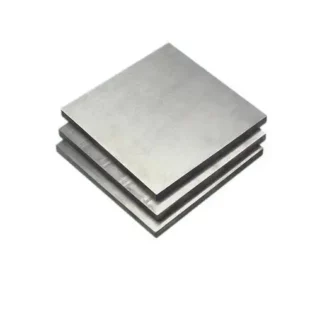Kính hi?n vi ?i?n t? truy?n qua có ?? phan gi?i cao (HRTEM ho?c HREM) là ?? t??ng ph?n pha (?? t??ng ph?n c?a hình ?nh kính hi?n vi ?i?n t? có ?? phan gi?i cao ???c hình thành b?i s? l?ch pha gi?a sóng chi?u t?ng h?p và sóng nhi?u x?, Nó ???c g?i là kính t??ng ph?n pha. ??a ra m?t s? s?p x?p nguyên t? c?a h?u h?t các v?t li?u tinh th?.
High-resolution transmission electron microscopy began in the 1950s. In 1956, JWMenter directly observed parallel strips of 12 ? copper phthalocyanine with a resolution of 8 ? transmission electron microscope, and opened high-resolution electron microscopy. The door to surgery. In the early 1970s, in 1971, Iijima Chengman used a TEM with a resolution of 3.5 ? to capture the phase contrast image of Ti2Nb10O29, and directly observed the projection of the atomic group along the incident electron beam. At the same time, the research on high resolution image imaging theory and analysis technology has also made important progress. In the 1970s and 1980s, the electron microscope technology was continuously improved, and the resolution was greatly improved. Generally, the large TEM has been able to guarantee a crystal resolution of 1.44 ? and a dot resolution of 2 to 3 ?. HRTEM can not only observe the lattice fringe image reflecting the interplanar spacing, but also observe the structural image of the atom or group arrangement in the reaction crystal structure. Recently, Professor David A. Muller’s team at Cornell University in the United States used laminated imaging technology and an independently developed electron microscope pixel array detector to achieve a spatial resolution of 0.39 ? under low electron beam energy imaging conditions.
Hi?n nay, kính hi?n vi ?i?n t? truy?n qua th??ng có kh? n?ng th?c hi?n HRTEM. Các kính hi?n vi ?i?n t? truy?n qua ???c phan thành hai lo?i: ?? phan gi?i cao và phan tích. TEM ?? phan gi?i cao ???c trang b? m?t m?nh c?c m?c tiêu có ?? phan gi?i cao và k?t h?p màng ng?n, làm cho góc nghiêng c?a b?ng m?u nh?, d?n ??n h? s? quang sai hình c?u m?c tiêu nh? h?n; trong khi TEM phan tích ?òi h?i m?t l??ng l?n h?n cho các phan tích khác nhau. Góc nghiêng c?a giai ?o?n m?u, do ?ó, c?c c?a ?ng kính v?t kính ???c s? d?ng khác v?i lo?i có ?? phan gi?i cao, do ?ó ?nh h??ng ??n ?? phan gi?i. Nhìn chung, TEM ?? phan gi?i cao 200 kev có ?? phan gi?i 1,9, trong khi TEM phan tích 200 kev có 2,3. Nh?ng ?i?u này kh?ng ?nh h??ng ??n hình ?nh phan tích TEM ch?p ?nh ?? phan gi?i cao.

As shown in Fig. 1, the optical path diagram of the high-resolution electron microscopy imaging process, when an electron beam with a certain wavelength (λ) is incident on a crystal with a crystal plane spacing d, the Bragg condition (2dsin θ = λ) is satisfied, A diffracted wave is generated at an angle (2θ). This diffracted wave converges on the back focal plane of the objective lens to form a diffraction spot (in an electron microscope, a regular diffraction spot formed on the back focal plane is projected onto the phosphor screen, which is a so-called electron diffraction pattern). When the diffracted wave on the back focal plane continues to move forward, the diffracted wave is synthesized, an enlarged image (electron microscopic image) is formed on the image plane, and two or more large objective lens pupils can be inserted on the back focal plane. Wave interference imaging, called high-resolution electron microscopy, is called a high-resolution electron microscopic image (high-resolution microscopic image).
Nh? ?? ?? c?p ? trên, hình ?nh kính hi?n vi ?i?n t? có ?? phan gi?i cao là hình ?nh hi?n vi t??ng ph?n pha ???c hình thành b?ng cách truy?n chùm tia truy?n qua c?a m?t ph?ng tiêu c? c?a th?u kính v?t kính và m?t s? chùm tia nhi?u x? qua con ng??i m?c tiêu, do s? k?t h?p pha c?a chúng. Do s? khác bi?t v? s? l??ng chùm tia nhi?u x? tham gia vào hình ?nh, hình ?nh có ?? phan gi?i cao c?a các tên khác nhau ???c thu ???c. Do các ?i?u ki?n nhi?u x? và ?? dày m?u khác nhau, các vi sóng ?i?n t? có ?? phan gi?i cao v?i th?ng tin c?u trúc khác nhau có th? ???c chia thành n?m lo?i: rìa l??i, hình ?nh c?u trúc m?t chi?u, hình ?nh m?ng hai chi?u (hình ?nh m?t ?), hai chi?u hình ?nh c?u trúc (hình ?nh t? l? nguyên t?: hình ?nh c?u trúc tinh th?), hình ?nh ??c bi?t.
Rìa l??i: N?u m?t chùm truy?n trên m?t ph?ng tiêu c? phía sau ???c ch?n b?i th?u kính v?t kính và m?t chùm nhi?u x? giao thoa v?i nhau, s? có m?t m?u rìa m?t chi?u v?i c??ng ?? thay ??i ??nh k? (nh? ???c hi?n th? b?i tam giác ?en trong Hình 2 (f)) ?ay là s? khác bi?t gi?a rìa m?ng và hình ?nh m?ng tinh th? và hình ?nh c?u trúc, kh?ng yêu c?u chùm electron ph?i song song chính xác v?i m?t ph?ng m?ng. Trên th?c t?, trong quan sát các tinh th?, k?t t?a và t??ng t?, các rìa m?ng th??ng thu ???c b?ng cách giao thoa gi?a sóng chi?u và sóng nhi?u x?. N?u m?t m?u nhi?u x? electron c?a m?t ch?t nh? tinh th? ???c ch?p ?nh, m?t vòng th? ph??ng s? xu?t hi?n nh? th? hi?n trong (a) c?a Hình 2.

Hình ?nh c?u trúc m?t chi?u: N?u m?u có ?? nghiêng nh?t ??nh, do ?ó chùm tia ?i?n t? song song v?i m?t ph?ng tinh th? nh?t ??nh c?a tinh th?, nó có th? th?a m?n m? hình nhi?u x? nhi?u x? m?t chi?u nh? trong Hình 2 (b) ( phan b? ??i x?ng ??i v?i ?i?m truy?n) M? hình nhi?u x?). Trong m?u nhi?u x? này, hình ?nh có ?? phan gi?i cao ???c ch?p trong ?i?u ki?n l?y nét t?i ?u khác v?i rìa m?ng và hình ?nh c?u trúc m?t chi?u ch?a th?ng tin c?a c?u trúc tinh th?, ngh?a là hình ?nh c?u trúc m?t chi?u thu ???c, nh? ???c hi?n th? trong hình 3 (hình ?nh c?u trúc m?t chi?u có ?? phan gi?i cao c?a oxit siêu d?n d?a trên Bi ???c hi?n th?.
Two-dimensional lattice image: If the electron beam is incident parallel to a certain crystal ribbon axis, a two-dimensional diffraction pattern can be obtained (two-dimensional symmetric distribution with respect to the central transmission spot, shown in Fig. 2(c)). For such an electron diffraction pattern. In the vicinity of the transmission spot, a diffraction wave reflecting the crystal unit cell appears. In the two-dimensional image generated by the interference between the diffracted wave and the transmitted wave, a two-dimensional lattice image showing the unit cell can be observed, and this image contains information on the unit cell scale. However, information that does not contain an atomic scale (into atomic arrangement), that is, a two-dimensional lattice image is a two-dimensional lattice image of single crystal silicon as shown in Fig. 3(d).
Two-dimensional structure image: A diffraction pattern as shown in Fig. 2(d) is obtained. When a high-resolution electron microscope image is observed with such a diffraction pattern, the more diffraction waves involved in imaging, the information contained in the high-resolution image is also The more. A high-resolution two-dimensional structure image of the Tl2Ba2CuO6 superconducting oxide is shown in Fig. 3(e). However, the diffraction of the high-wavelength side with higher resolution limit of the electron microscope is unlikely to participate in the imaging of the correct structure information, and becomes the background. Therefore, within the range allowed by the resolution. By imaging with as many diffracted waves as possible, it is possible to obtain an image containing the correct information of the arrangement of atoms within the unit cell. The structure image can only be observed in a thin region excited by the proportional relationship between the wave participating in imaging and the thickness of the sample.

Hình ?nh ??c bi?t: Trên m?u nhi?u x? c?a m?t ph?ng tiêu c? phía sau, vi?c chèn kh?u ?? ch? ch?n hình ?nh sóng c? th? ?? có th? quan sát hình ?nh t??ng ph?n c?a th?ng tin c?u trúc c? th?. M?t ví d? ?i?n hình c?a nó là m?t c?u trúc có tr?t t? nh? th? nào. M?u nhi?u x? electron t??ng ?ng ???c hi?n th? trong Hình 2 (e) là m?u nhi?u x? electron c?a h?p kim theo th? t? Au, Cd. C?u trúc ???c s?p x?p d?a trên c?u trúc l?p ph??ng t?p trung vào m?t, trong ?ó các nguyên t? Cd ???c s?p x?p theo th? t?. Hình 2 (e) m?u nhi?u x? electron là y?u ngo?i tr? các ph?n x? m?ng c? b?n c?a các ch? s? (020) và (008). Ph?n x? m?ng tinh th?, s? d?ng th?u kính v?t kính ?? trích xu?t ph?n x? m?ng c? b?n, s? d?ng sóng truy?n và hình ?nh ph?n x? m?ng tinh th?, ch? các nguyên t? Cd có ?i?m sáng ho?c ?i?m t?i nh? ?? phan gi?i cao nh? trong Hình 4.

Nh? th? hi?n trong Hình 4, hình ?nh có ?? phan gi?i cao thay ??i theo ?? dày c?a m?u g?n tiêu c? d??i ?? phan gi?i cao t?i ?u. Do ?ó, khi chúng ta có ???c m?t hình ?nh có ?? phan gi?i cao, chúng ta kh?ng th? ??n gi?n nói r?ng hình ?nh có ?? phan gi?i cao là gì. ??u tiên chúng ta ph?i th?c hi?n m?t m? ph?ng trên máy tính ?? tính toán c?u trúc c?a v?t li?u d??i các ?? dày khác nhau. Hình ?nh ch?t l??ng có ?? phan gi?i cao. M?t lo?t các hình ?nh có ?? phan gi?i cao do máy tính tính toán ???c so sánh v?i các hình ?nh có ?? phan gi?i cao do thí nghi?m thu ???c ?? xác ??nh các ?nh có ?? phan gi?i cao do thí nghi?m thu ???c. Hình ?nh m? ph?ng máy tính trong Hình 5 ???c so sánh v?i hình ?nh có ?? phan gi?i cao thu ???c t? thí nghi?m.
This article is organized by the material person column technology consultant.










